Children grow quickly, and their needs change just as fast. For a child using a prosthetic limb, this means that what fits today may not work as well in a few months or years. Parents often wonder: Can my child’s prosthetic limb be upgraded? How often will they need a new one? What are the options for making adjustments?
The answer is yes—prosthetic limbs can and should be upgraded as a child grows. Regular adjustments and replacements ensure that a child’s prosthetic remains comfortable, functional, and supportive. At Robobionics, we believe that no child should feel restricted by their prosthetic limb. With the right approach, upgrades can help children stay active, independent, and confident as they grow.
In this article, we’ll explore everything you need to know about when, why, and how to upgrade a prosthetic limb, ensuring your child always has the best possible fit and function.
Why Do Children Need Prosthetic Upgrades?
A prosthetic limb is not a one-time solution. As children grow, their bodies change, and their prosthetic must be adjusted or replaced to keep up with their development.
Growth and Physical Changes

Children grow at a much faster rate than adults, which means their prosthetic limb must keep up with their increasing height, weight, and limb length. A prosthetic that once fit perfectly can quickly become too tight, too short, or uncomfortable.
For example, a child who receives a below-knee prosthetic at age five may need a longer and stronger prosthetic by age seven. Their bones, muscles, and overall body structure change, requiring an upgrade to ensure proper movement and balance.
Changes in Activity Levels and Interests
As children grow, they become more active and curious about different physical activities. A child who once crawled and walked carefully may now want to run, jump, or play sports. If their current prosthetic is not designed for these movements, it may need to be upgraded to support higher-impact activities.
For example, a child who develops an interest in football, cycling, or dance may need a prosthetic limb with better flexibility, grip, or shock absorption.
Wear and Tear Over Time
Even the most durable prosthetic limbs experience wear and tear, especially when used by active children. Daily movements, exposure to different surfaces, weather conditions, and rough play can weaken or damage certain parts of the prosthetic.
A child’s prosthetic may require new sockets, better joints, or stronger materials as they continue to use it every day. Regular upgrades help keep the prosthetic in top condition, reducing discomfort and improving durability.
When Should a Child’s Prosthetic Be Upgraded?
Every child is different, so there is no fixed timeline for prosthetic upgrades. However, certain signs indicate that an upgrade or adjustment is needed.
Outgrowing the Current Prosthetic
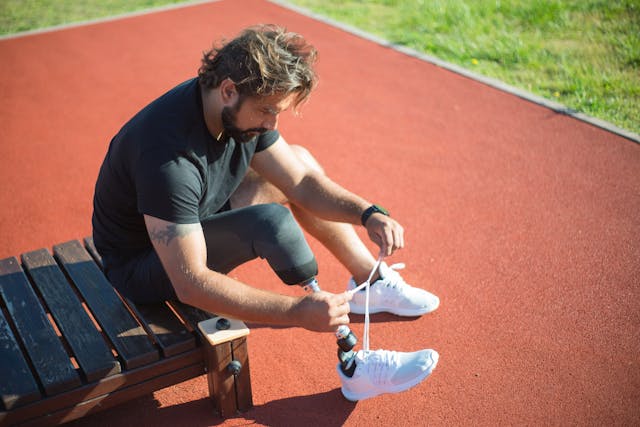
One of the most common reasons for an upgrade is growth. If your child’s prosthetic limb:
- Feels too tight or uncomfortable,
- No longer provides proper support,
- Causes skin irritation or pressure marks,
it may be too small and needs a larger size.
On average, younger children may need a prosthetic upgrade every 6 to 12 months, while older children and teenagers may need a new prosthetic every 1 to 2 years.
Difficulty Performing Everyday Activities
If a child starts struggling with tasks that were once easy—such as walking, holding objects, or playing—it could mean their prosthetic no longer fits properly or lacks the needed flexibility.
For example, if a child using a prosthetic hand finds it difficult to grasp a cup, hold a pencil, or use utensils, their prosthetic may need a grip improvement or a more advanced model.
Pain, Discomfort, or Skin Issues
A properly fitted prosthetic should never cause pain. If a child experiences redness, blisters, or discomfort, the socket or alignment may need immediate adjustments or an upgrade.
Sometimes, simple modifications like padding, liner changes, or minor structural adjustments can solve the problem. Other times, a complete upgrade is necessary to ensure comfort and function.
Types of Prosthetic Upgrades Available
Prosthetic limbs come with various components that can be adjusted, replaced, or upgraded. Understanding your options can help you choose the best solution for your child’s needs.
Socket Adjustments and Replacements

The socket is the part of the prosthetic limb that connects to the child’s residual limb. As children grow, their residual limb changes in shape and size, meaning the socket may need to be:
- Resized to provide a better fit,
- Re-shaped to prevent pressure points,
- Completely replaced if it becomes too small.
A well-fitted socket ensures comfort, stability, and ease of movement.
Adding More Functional Features
As children grow, they may need a more advanced prosthetic with improved functionality. Some options include:
- Myoelectric hands that allow for better grip and fine motor skills,
- Running blades for high-speed movement and sports,
- Flexible knee joints that provide smoother bending and walking.
Upgrading to a more functional prosthetic ensures that children can continue to explore and develop new abilities without limitations.
Stronger, Lighter, and More Durable Materials
Prosthetic technology is constantly improving, with new materials making prosthetics stronger, lighter, and more flexible. Upgrading to modern, high-quality materials can:
- Reduce weight, making the prosthetic easier to use,
- Improve durability, reducing the need for frequent repairs,
- Enhance movement, allowing for more natural flexibility.
For example, switching from a heavier plastic model to a lightweight carbon fiber design can improve comfort and ease of movement.
How to Plan for Your Child’s Prosthetic Upgrades
Regular prosthetic upgrades require planning and coordination. Here’s how you can stay prepared.
Schedule Regular Prosthetic Check-Ups
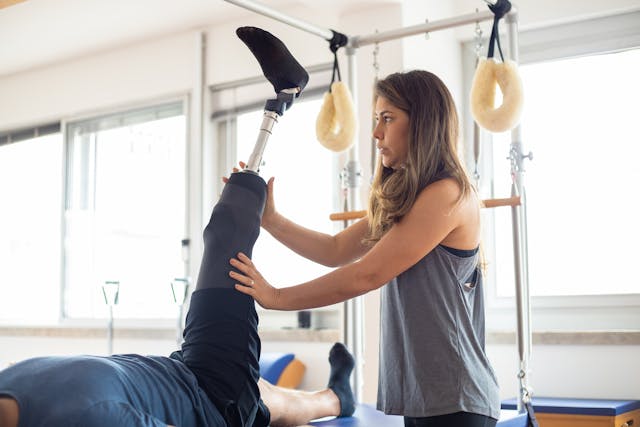
Routine check-ups with a prosthetist help identify early signs of discomfort or poor fit before they become major issues. Ideally, a child should visit their prosthetist every 6 months to ensure their prosthetic is working properly.
If your child suddenly complains of discomfort or difficulty using their prosthetic, don’t wait—schedule a check-up immediately.
Work with a Prosthetist to Choose the Right Upgrades
Every child has unique needs, so it’s essential to consult with a prosthetist before making upgrades. They will help determine:
- Whether the prosthetic needs minor adjustments or a full replacement,
- Which materials and features best suit your child’s lifestyle,
- How to improve comfort and functionality without unnecessary costs.
Plan for Future Growth and Adjustments
Since upgrades will be needed regularly, it’s a good idea to plan ahead. Some parents choose modular prosthetic designs, which allow certain parts (like sockets or joints) to be replaced without changing the entire prosthetic.
At Robobionics, we design prosthetics that grow with your child, offering easy adjustments and custom modifications for better longevity and comfort.
Helping Your Child Emotionally Adjust to Prosthetic Upgrades
While physical adjustments are important, emotional support is just as crucial. Children may feel anxious, excited, or even frustrated when getting a new prosthetic limb. Helping them navigate these emotions makes the transition easier and more positive.
Preparing for the Change
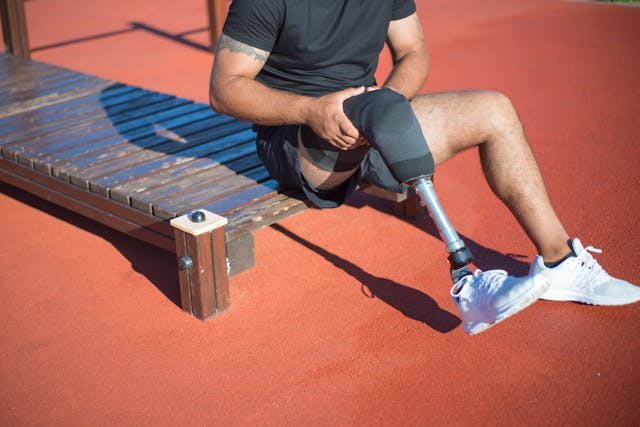
Before upgrading a prosthetic limb, talk to your child about what to expect. Explain why the change is needed and how it will help them move more comfortably. If possible, involve them in the process by letting them choose colors, designs, or special features that make them feel excited about their new prosthetic.
Encouraging them to see the upgrade as a step forward, rather than a disruption, helps them embrace the change with confidence.
Giving Them Time to Adjust
A new prosthetic may feel strange at first, even if it’s a better fit. Your child may need time to relearn certain movements, especially if the upgrade comes with new features or improved flexibility.
Remind them that learning takes time, and that frustration is normal in the beginning. Encourage them to take it slow, practice daily activities, and celebrate small victories along the way.
Providing Encouragement and Support
As your child adjusts, offer constant encouragement. Celebrate their progress, no matter how small, and remind them that their prosthetic is there to help them, not limit them.
If they express frustration or self-doubt, reassure them by sharing stories of other children or athletes with prosthetic limbs who have successfully adapted. Knowing they are not alone in their journey can provide a huge confidence boost.
The Role of Schools and Caregivers in Prosthetic Upgrades
Since children spend much of their time in school, teachers and caregivers play an essential role in helping them adapt to their upgraded prosthetic limb. Open communication ensures that they receive the support and encouragement needed in daily activities.
Informing Teachers About the Upgrade
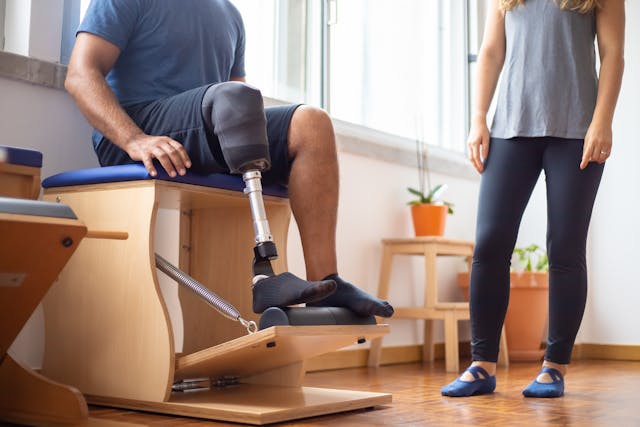
Once your child receives an upgraded prosthetic, inform their teachers about:
- Any changes in mobility or movement that may require temporary accommodations
- New features or adjustments that your child is learning to use
- Signs of discomfort or difficulty that teachers should look out for
This allows educators to support your child’s transition by making necessary adjustments in the classroom or during physical activities.
Ensuring Accessibility in School Activities
Prosthetic upgrades may introduce new movement capabilities, meaning your child may need time to adjust before fully participating in sports or playtime. Schools can assist by:
- Allowing extra time for walking between classes or stair climbing
- Providing modified sports options that help the child regain confidence
- Encouraging classmates to be supportive and inclusive
By making small accommodations, schools help ensure that every child with a prosthetic limb feels included and capable.
Caregivers and Daily Support
For younger children, caregivers at home, daycare, or after-school programs should also be informed about the prosthetic upgrade. This helps them provide the right assistance while allowing the child to practice independence.
Caregivers can:
- Encourage daily activities like dressing, eating, and playing
- Help with minor prosthetic adjustments if needed
- Reassure the child when they feel uncertain about their new limb
The more a child is supported in different environments, the more confident they become in using their prosthetic limb effortlessly.
Financial Planning and Insurance for Prosthetic Upgrades
One of the biggest concerns for parents is how to afford regular prosthetic upgrades. Since children outgrow their prosthetics faster than adults, it’s important to have a financial plan in place to cover the costs of replacements and adjustments.
Understanding Your Insurance Coverage
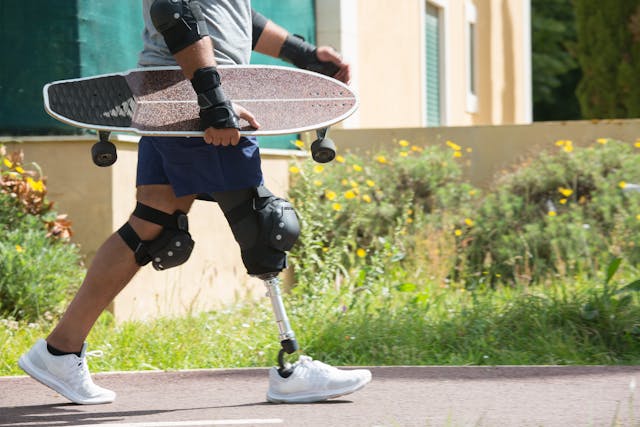
Many health insurance plans cover prosthetic replacements and upgrades—but the extent of coverage varies. Parents should:
- Check with their insurance provider to understand how often prosthetic upgrades are covered
- Ask about partial or full coverage for adjustments, fittings, and new materials
- Keep medical records and growth reports to justify the need for a prosthetic upgrade when applying for coverage
At Robobionics, we help parents navigate the financial aspects of prosthetic care, offering guidance on funding options and affordable solutions.
Exploring Government and NGO Support
In India, various government programs and non-profit organizations provide financial assistance for children with prosthetic limbs. Parents can explore:
- Government disability support programs that offer subsidies for medical equipment
- NGO initiatives that provide free or low-cost prosthetic limbs for growing children
- Crowdfunding and community support networks that assist families in need
Finding the right financial assistance ensures that cost is never a barrier to a child receiving the best prosthetic care.
Investing in Modular or Adjustable Prosthetics
Some prosthetic designs allow for modular adjustments, meaning certain parts (such as sockets or joints) can be modified without replacing the entire prosthetic limb.
These designs:
- Reduce the frequency of full prosthetic replacements
- Allow for cost-effective adjustments as a child grows
- Provide long-term adaptability and better durability
Parents can discuss adjustable prosthetic options with a prosthetist to find the best long-term solution for their child’s needs.
Final Thoughts: Ensuring the Best Prosthetic Fit for Your Child
A child’s growth should never limit their ability to play, explore, and enjoy life. Regular prosthetic upgrades ensure that they move freely, stay comfortable, and continue to develop new skills.
At Robobionics, we specialize in custom prosthetic solutions that adapt as children grow. Whether your child needs a simple adjustment, a new socket, or a more advanced prosthetic limb, we are here to help them stay confident, active, and independent.
🚀 Does your child’s prosthetic need an upgrade? Book a free consultation with our experts today!
💡 Have questions about your child’s prosthetic care and future needs? Contact us now, and let’s find the best solution together!



